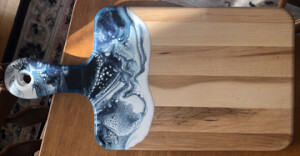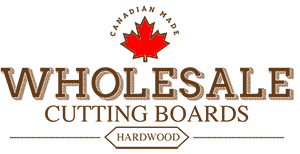Blog
The Best Wood Cutting Boards for Resin Art or Epoxy Art
Is epoxy suitable for cutting boards?
Today, epoxy is one of the most trendy technologies found in the kitchen. You can find it on tumblers, coasters, countertops, and even cutting boards. One reason why epoxy is popular is that it protects the surface of the medium it covers for years. In fact, epoxy protects wholesale wood cutting boards for Resin art from yellowing.
This is because it protects the kitchen items with a hard outer layer.
Besides providing protection, epoxy is food safe. While the key ingredient is bisphenol A, it contains low levels of BPA. To ensure the safety of your family from toxins, always look for epoxy labeled as food safe.
Many people have gotten creative in the kitchen, not just with ingredients and recipes. But with cutting boards too. It’s common to find cutting boards with stunning art. Each unique design can be an inspiration of a natural landscape such as the sky or ocean.
To create awe-inspiring resin artworks, not only do you need wholesale wood cutting boards for Resin art. But the best supplier of cutting boards for Resin art.
In this post, we cover the best wood cutting boards for resin art or epoxy art.
Maple Cutting Boards
When it comes to wooden cutting boards, maple is the industry standard. On the Janka scale, hard and sugar maple rank 1450. As such, they are harder and durable.
There are several reasons why maple is the best.
First, it offers an excellent cutting surface. Whether you are dicing onions or cutting meat, the wood wears well. In fact, it does not ruin a good cutting edge.
Second, hard and sugar maple have neutral colors. This helps to bring out the epoxy or resin art. Third, the wood has small pores and dense grain. This is effective against bacteria.
Walnut Cutting Boards
There are 15 known species of the walnut tree which grow in temperate and tropical areas. In Canada, the only native species are the black and butternut walnut. These are commonly found in the East.
They grow to an average of 20 to 30 m high and consist of 15 to 23 leaves. On the Janka scale, the butternut and black walnut rank 490 lb (2,180 N). One reason why walnut cutting boards are suitable for epoxy and resin arts is that they’re closed grained.
Just like the hard and sugar maple, walnut cutting boards are great on knives. Another reason is the dark hue. The rich, dark shade gives the cutting board a chic look. Not only that. It helps to hide any imperfections.
Cherry Cutting Boards
If you are looking for cutting boards with a deep, dark red hue, then cherry is the way to go. Whether you want to add creative resin or epoxy art, the end result will look amazing. On the Janka scale, cherry ranks 995, which is slightly higher than the black cherry.
What you ought to know is that a well-cured cherry is strong as maple. It’s also easier to work with just like oak. Thanks to its stable nature, cherry is easy to cut, shape, and sand without experiencing any excessive chipping.
As it ages, the color improves. That is why cherry is commonly used in the making of furniture.
Cutting Boards Made from Teak
Teak is a large deciduous tree commonly found in mixed hardwood forests. As part of the tropical hardwood tree species, teak is weather resistant. In fact, it’s one of the few hardwoods that contains natural oil. This oil helps to repel water preventing the wood from becoming brittle, cracking, or warping.
Besides being weather-resistant, it’s high in silica, a substance found in glass and sand. On the Janka scale, it has a hardness of 1155, which is higher than that of a Brazilian Eucalyptus, English Oak, and Rose Gum.
Thanks to these properties, teak cutting boards are ideal for decorating with epoxy or resin arts. What you need to keep in mind is that the wood may dull your knife with daily use.
Beech
There are ten beech species, with the American beech, which is native to North America, being the most common. In Canada, the American beech can be primarily found in the East.
It has a straight trunk with thick, bluish-grey bark. The tree can grow to 30 m in height and has single, long oval leaves. Besides the American beech, there is the European beech.
Usually planted as an ornamental in Canada, it’s heavy, hard, and sturdy. As such, it’s commonly used in the making of furniture, cutting boards, and tool handles. Between the American and European species, the European species has a hardness of 1450, while the other has a hardness of 1300 on the Janka scale.
The good news is, both are ideal for cutting boards because they ward off dirt and are hard-wearing.
Final Thoughts about Resin Art or Epoxy Art
A good cutting board can last for years, even with frequent, heavy use. To give your kitchen a colorful look, you can add epoxy or resin art on your cutting boards. It’s pretty easy.
Place tape across your cutting board to protect the rest of the wood and create a clean line. Pour the resin onto the exposed areas and allow it to sit for the chemical reaction to create the colorful glazes.
Dry for 24 to 72 hours before use. Once the resin becomes shiny and smooth, the surface is hard-wearing. Now you can chop and prepare food as well as serve cheese and bread.
Looking for the supplier of wholesale cutting boards for Resin art? Get in touch with us today!
